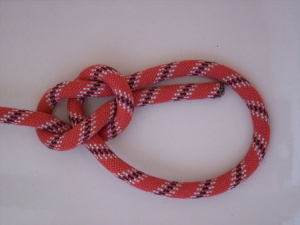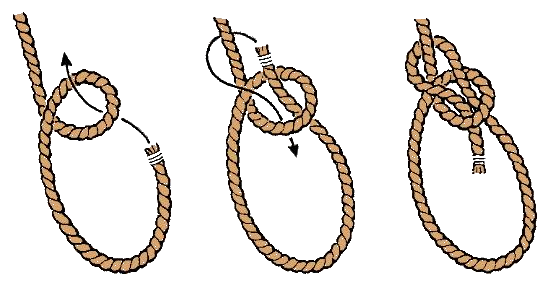Difference between revisions of "Bowline"
(Created page with "Bowline Knot The bowline is an ancient and simple knot used to form a fixed loop at the end of a rope. It has the virtues of being ...") |
Latest revision as of 16:27, 28 November 2013
The bowline is an ancient and simple knot used to form a fixed loop at the end of a rope. It has the virtues of being both easy to tie and untie. The bowline is sometimes referred as King of the knots because of its importance. It is one of the four basic maritime knots (the other three are figure-eight knot, reef knot and clove hitch).
Although generally considered a reliable knot, its main deficiencies are a tendency to work loose when not under load and the bight portion of the knot to capsize in certain circumstances. To address these shortcomings, a number of more secure variations of the bowline have been developed for use in safety-critical applications.
Contents |
Steps
Video
Usage
The bowline is used to make a loop at one end of a line. It is tied with the rope's working end (aka bitter end). The loop may pass around or through an object during the making of the knot. The knot tightens when loaded at (pulled by) the standing part of the line.
The bowline is commonly used in sailing small craft, for example to fasten a halyard to the head of a sail or to tie a jib sheet to a clew of a jib. The bowline is well known as a rescue knot for such purposes as rescuing people who might have fallen down a hole, or off a cliff onto a ledge. They would put it around themselves and sit on the loop. This makes it easy to heft them up away from danger. The Federal Aviation Administration recommends the bowline knot for tying down light aircraft. A rope with a bowline retains approximately 65% of its strength at the location of the knot, although in practice the exact strength depends on a variety of factors.

